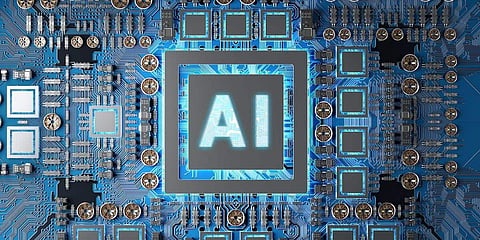

Growing with the remarkable development of digital data of images, videos, and speech from sources, for example, online media and the internet-of-things is driving the requirement for analytics to make that information justifiable and noteworthy.
Data analytics frequently depend on machine learning (ML) algorithms. Among ML algorithms, deep convolutional neural networks (DNNs) offer cutting edge precision for significant image classification errands and are getting widely adopted.
The renewed interest in artificial intelligence in the previous decade has been a boon for the graphics cards industry. Organizations like Nvidia and AMD have seen an immense lift to their stock prices as their GPUs have demonstrated to be effective for training and running deep learning models. Nvidia, indeed, has even rotated from an unadulterated GPU and gaming organization to a supplier of cloud GPU services and a skilled AI research lab.
In any case, GPUs have natural imperfections that pose challenges in placing them to use in AI applications, as indicated by Ludovic Larzul, CEO and co-founder of Mipsology, a company that specializes in machine learning software.
The solution, according to Larzul, are field programmable gate arrays (FPGA). FPGA is a kind of processor that can be customized subsequent to assembling, which makes it more effective than generic processors
Field programmable gate arrays (FPGAs) are incorporated circuits with a programmable hardware fabric. Dissimilar to graphics processing units (GPUs) or ASICs, the hardware inside a FPGA chip isn't hard etched, it tends to be reprogrammed as needed. This ability makes FPGAs a brilliant option in contrast to ASICs, which require a long development time and a significant investment to design and build.
The tech business deployed FPGAs for machine learning and deep learning quite recently. In 2010, Microsoft Research exhibited one of the principal use instances of AI on FPGAs as a feature of its endeavors to quicken web searches. FPGAs offered a mix of speed, programmability, and flexibility, delivering performance without the expense and multifaceted nature of creating custom application-specific integrated circuits (ASICs). After five years, Microsoft's Bing search engine was utilizing FPGAs in production, demonstrating their value for deep learning applications. By utilizing FPGAs to accelerate search positioning, Bing gained a 50% expansion in throughput.
GPUs require a ton of electricity, produce a lot of heat, and use fans for cooling. This isn't a very remarkable issue as you're training your neural network on a desktop workstation, a laptop computer, or a server rack. However, a large number of the environments where deep learning models are deployed are not agreeable to GPUs, for example, self-driving vehicles, production lines, robotics, and many smart-city settings where the hardware needs to bear ecological factors, for example, heat, dust, mugginess, movement, and power imperatives.
Life expectancy is likewise an issue. GPUs last for around 2-5 years, which is certifiably not a significant issue for gamers who ordinarily supplant their computers like clockwork. In any case, in different areas, for example, the automotive business, where there's desire for higher durability, it can get tricky, particularly as GPUs can cease to exist quicker because of the exposure to ecological elements and more intense use.
Incredible performance with low latency and high throughput: FPGAs can intrinsically give low latency
just as deterministic latency for real-time applications like video streaming, transcription, and action recognition by straightforwardly ingesting video into the FPGA, bypassing a CPU. Developers can assemble a neural network starting from the earliest stage and structure the FPGA to best suit the model.
Defeating I/O bottlenecks: FPGAs are utilized where information must cross a wide range of networks at low latency. They're inconceivably valuable at taking out memory buffering and defeating I/O bottlenecks, which is one of the most restricting factors in AI system performance. By accelerating data ingestion, FPGAs can speed the entire AI workflow.
Promoting high performance computing (HPC) clusters: FPGAs can help encourage the intermingling of AI and HPC by filling in as programmable quickening agents for inference.
Low energy utilization: With FPGAs, developers can adjust the hardware to the application, helping meet power efficiency requirements. FPGAs can likewise oblige various capacities, delivering more energy efficiency from the chip. It's conceivable to utilize a bit of a FPGA for a function, as opposed to the whole chip, permitting the FPGA to have various functions in parallel.
Join our WhatsApp Channel to get the latest news, exclusives and videos on WhatsApp
_____________
Disclaimer: Analytics Insight does not provide financial advice or guidance. Also note that the cryptocurrencies mentioned/listed on the website could potentially be scams, i.e. designed to induce you to invest financial resources that may be lost forever and not be recoverable once investments are made. You are responsible for conducting your own research (DYOR) before making any investments. Read more here.
